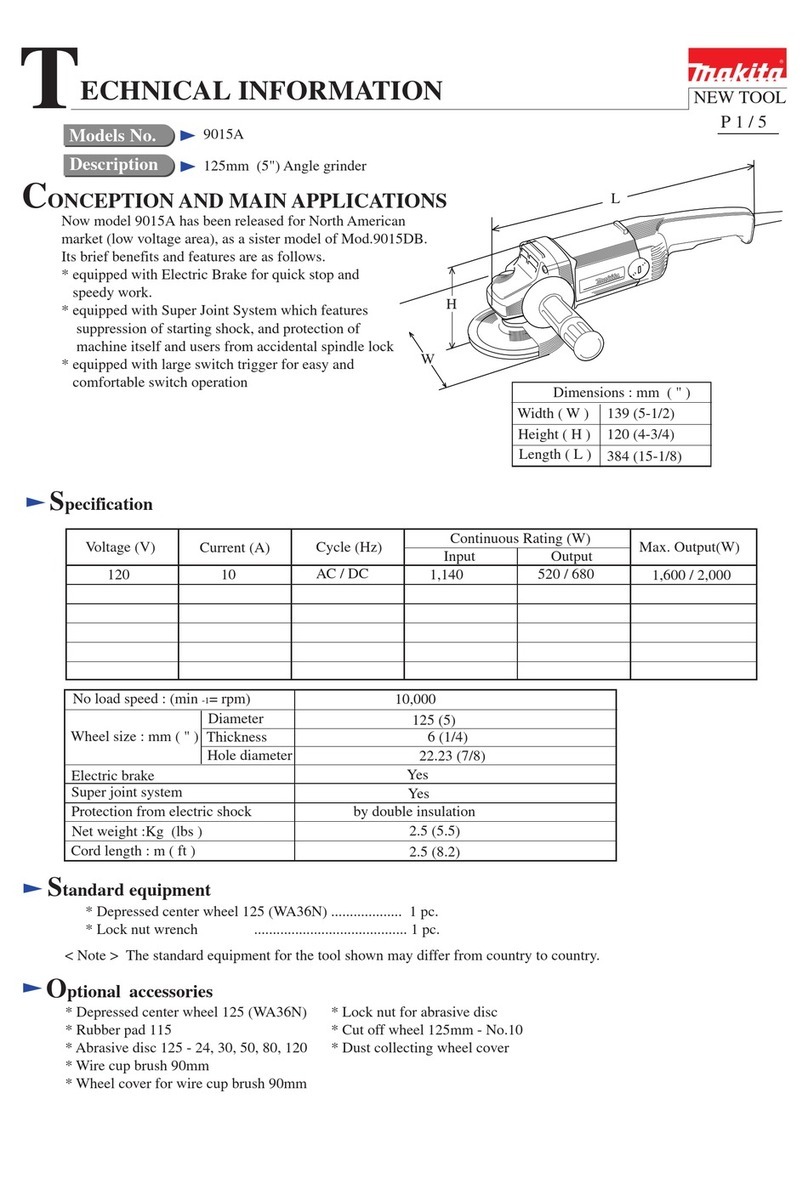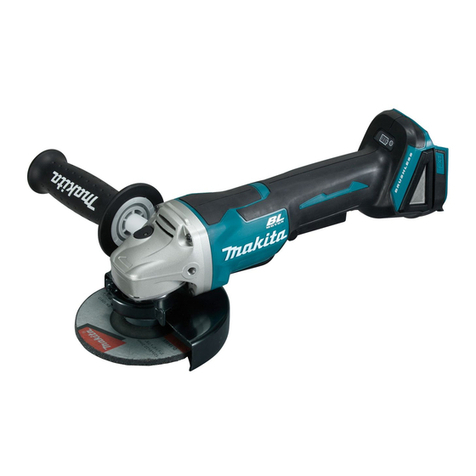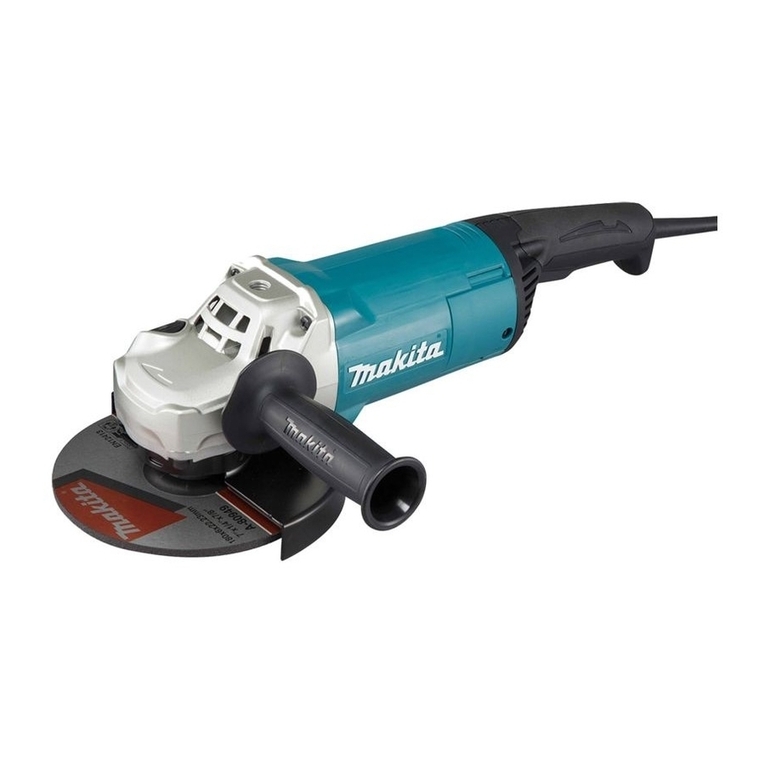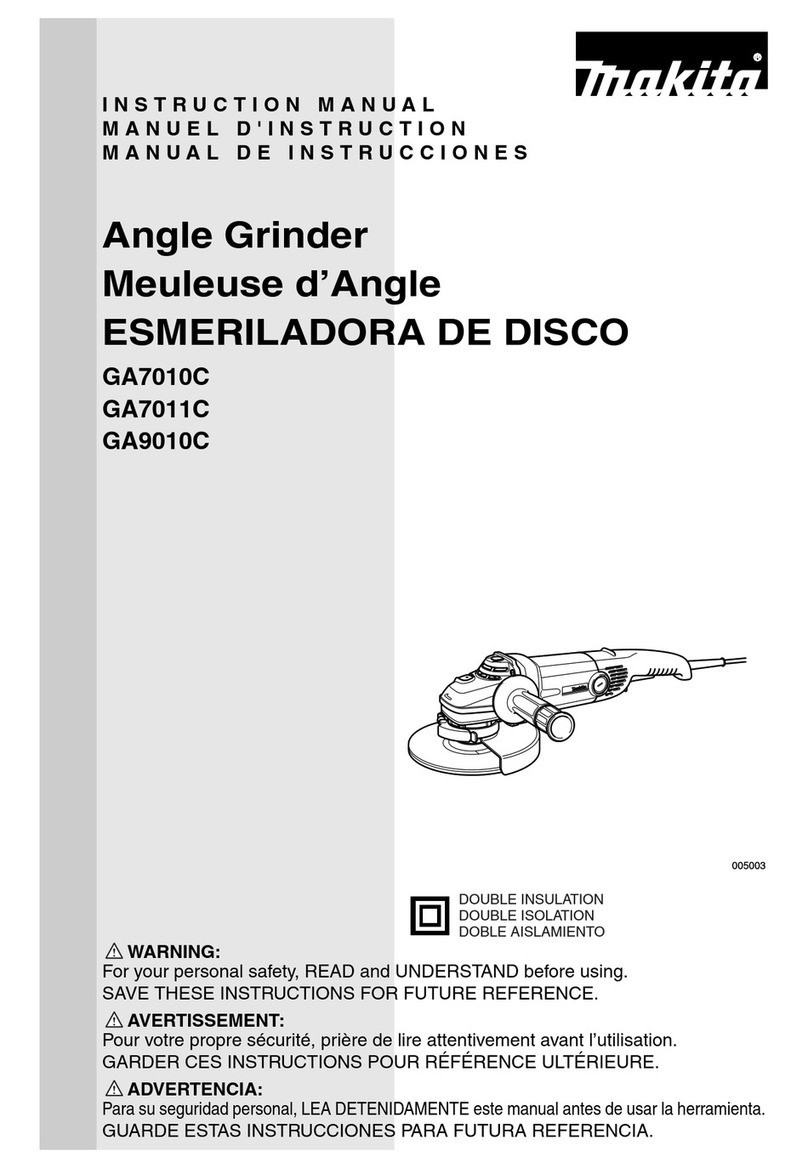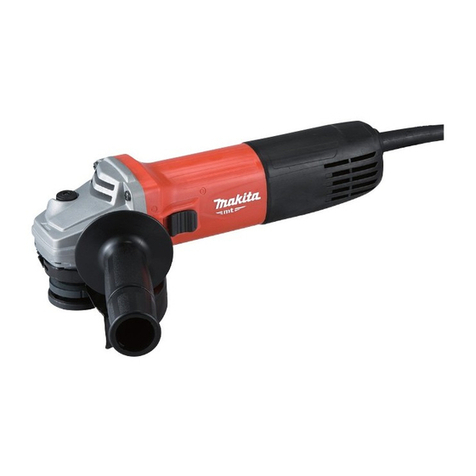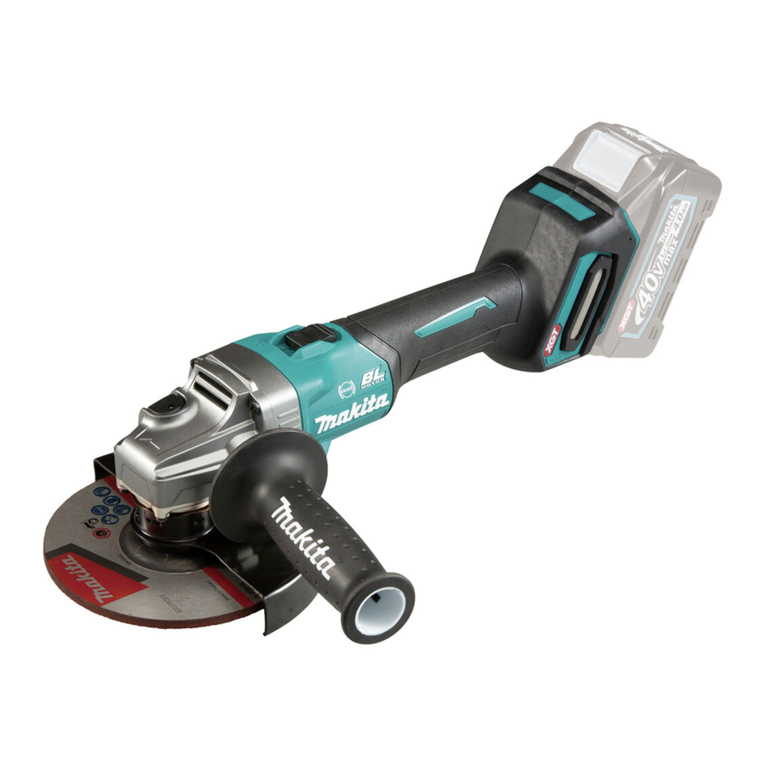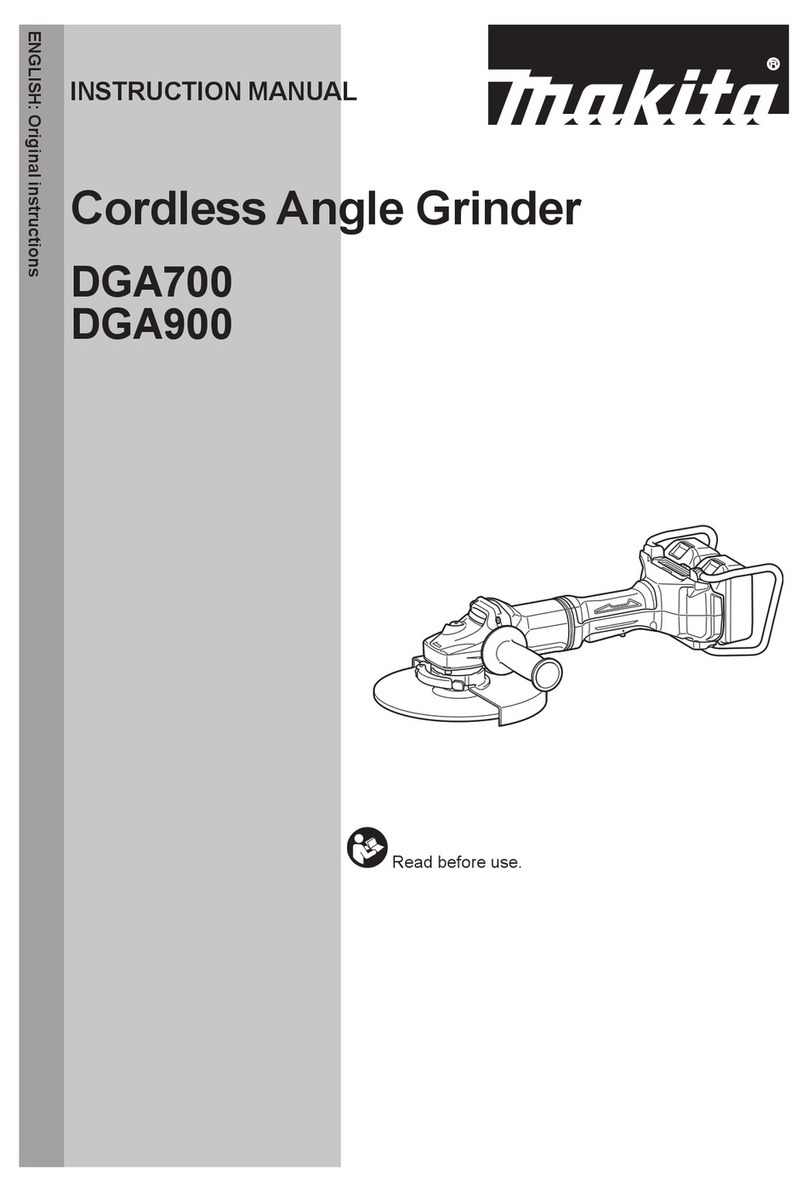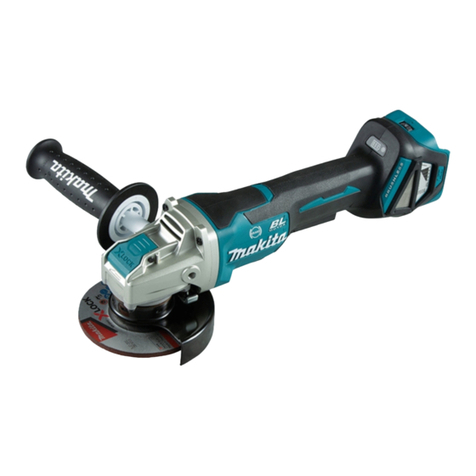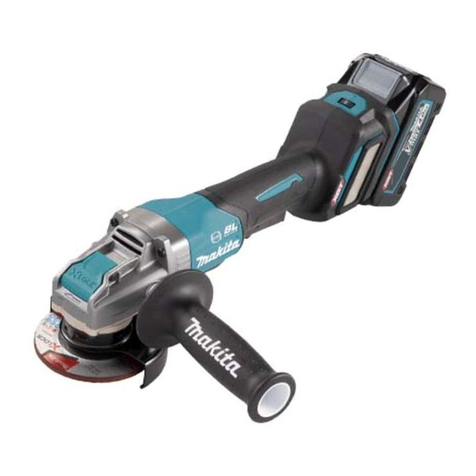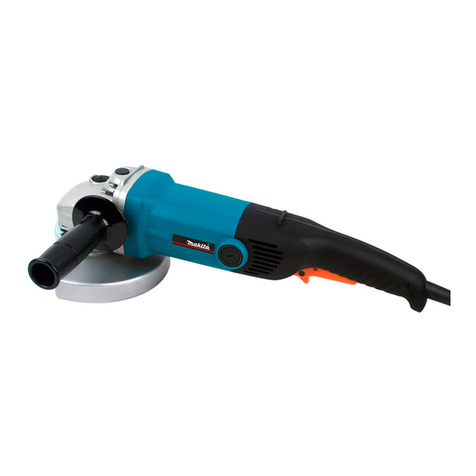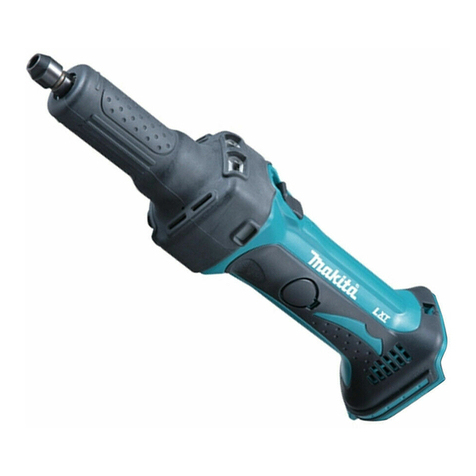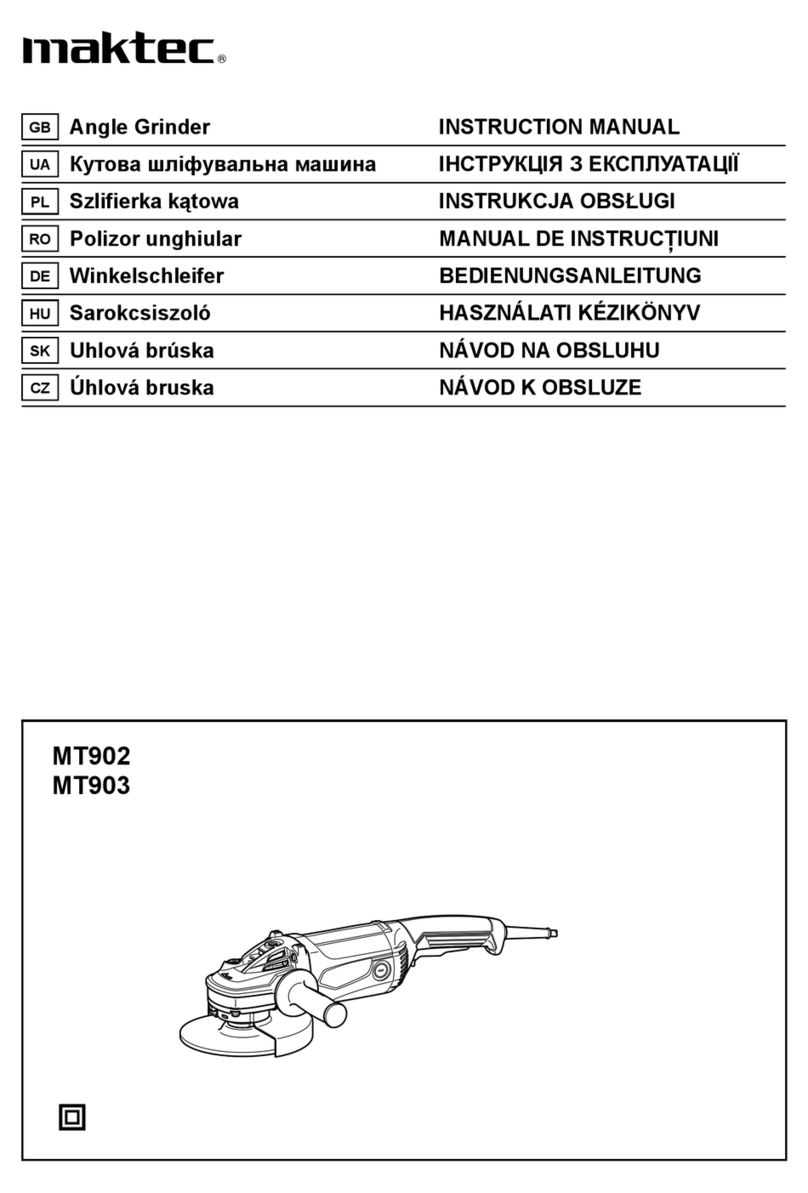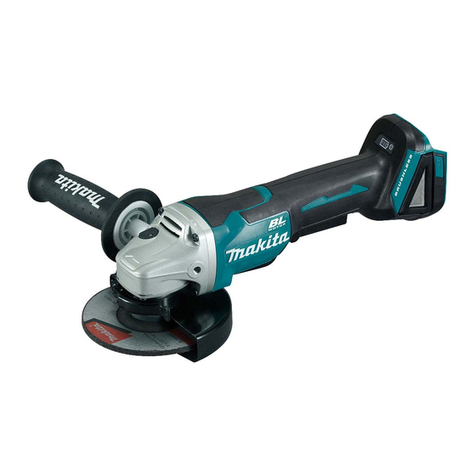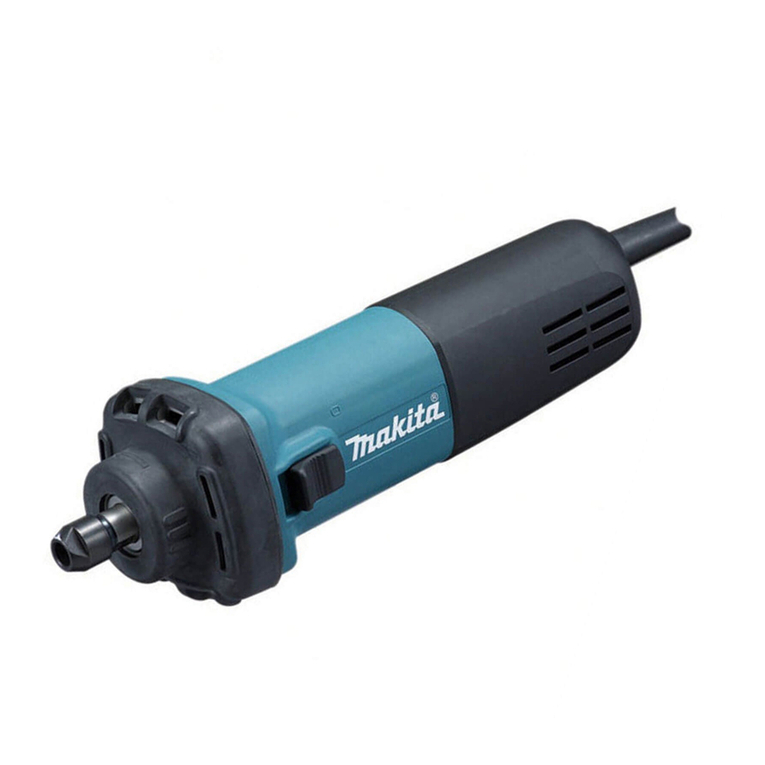The subject models are cordless angle grinders powered by 18V Li-ion battery,
and equipped with highly enhanced Brushless DC motor compared to the current
models DGA402/ DGA452.
A built-in controller changes the cutting speed automatically according to load condition,
enabling users to obtain high speed rotation on light duty application/ high torque on
heavy duty application.
Models No.
Description
PRODUCT
TECHNICAL INFORMATION
CONCEPT AND MAIN APPLICATIONS
Specification
Standard equipment
Optional accessories
P 1/ 14
Dimensions: mm (")
DGA404
All
Width (W) DGA454
Length (L)*1 362 (14-1/4)
117 (4-5/8)
130 (5-1/8)
DGA504
DGA404
Height (H)
140 (5-1/2)
140 (5-1/2)
DGA454,
DGA504 145 (5-3/4)
Note: The standard equipment may vary by country or model variation.
DGA404, DGA454, DGA504
18V Cordless Angle Grinders L
H
W
Specification Model DGA404
18
Weight according to
EPTA-Procedure 01/2003: kg(lbs)*22.5 (5.5) 2.5 (5.6)2.4 (5.3)
Battery
1.5, 2.0, 3.0, 4.0, 5.0Capacity: Ah
Voltage: V
Li-ionCell
Energy capacity: W 27, 36, 54, 72, 90
Charging time (approx.): min. 15, 18, 22, 36, 45 with DC18RC
Wheel size: mm (") Hole diameter
6 (1/4)Max. thickness
Diameter 100 (4)
16 (5/8) 22.23 (7/8)
8,500
No
Yes
Yes
Yes
Yes
Yes
No load speed: min.ֿ ¹= rpm
Slide
Switch type
Electronic
control
Overload warning lamp
Electronic current limiter
Soft start
Anti-restart function
Battery fuel gauge
Soft grip
*2 With 3.0Ah battery
*1 With BL1830/ BL1840/ BL1850
Note: BL1815 is not compatible.
DGA504DGA454
115 (4-1/2) 125 (5)
Lock nut wrench ............................................ 1
Side grip ......................................................... 1
Depressed center grinding wheel ................... 1 (100mm for DGA404, 115mm for DGA454, 125mm for DGA504)
Battery cover .................................................. 1 (except -Z- model)
Plastic carrying case ....................................... 1 (except -Z- model)
Charger DC18RC ........................................... 1 (except -Z- model)
Li-ion battery BL1830 or BL1840 ................. 2 (except -Z- model)
Depressed center wheels
Rubber pads
Abrasive discs
Wire brushes
Diamond wheels
Abrasive cut off wheels
Toolless wheel covers
Sanding lock nuts
Fast charger DC18RC
Fast charger DC18SD
Charger DC24SC
Automotive charger DC18SE
Four port multi charger DC18SF
Li-ion battery BL1815N
Li-ion battery BL1820
Li-ion battery BL1830
Li-ion battery BL1840
Li-ion battery BL1850
OFFICIAL USE
for ASC & Sales Shop

